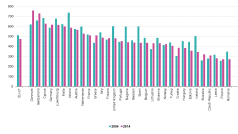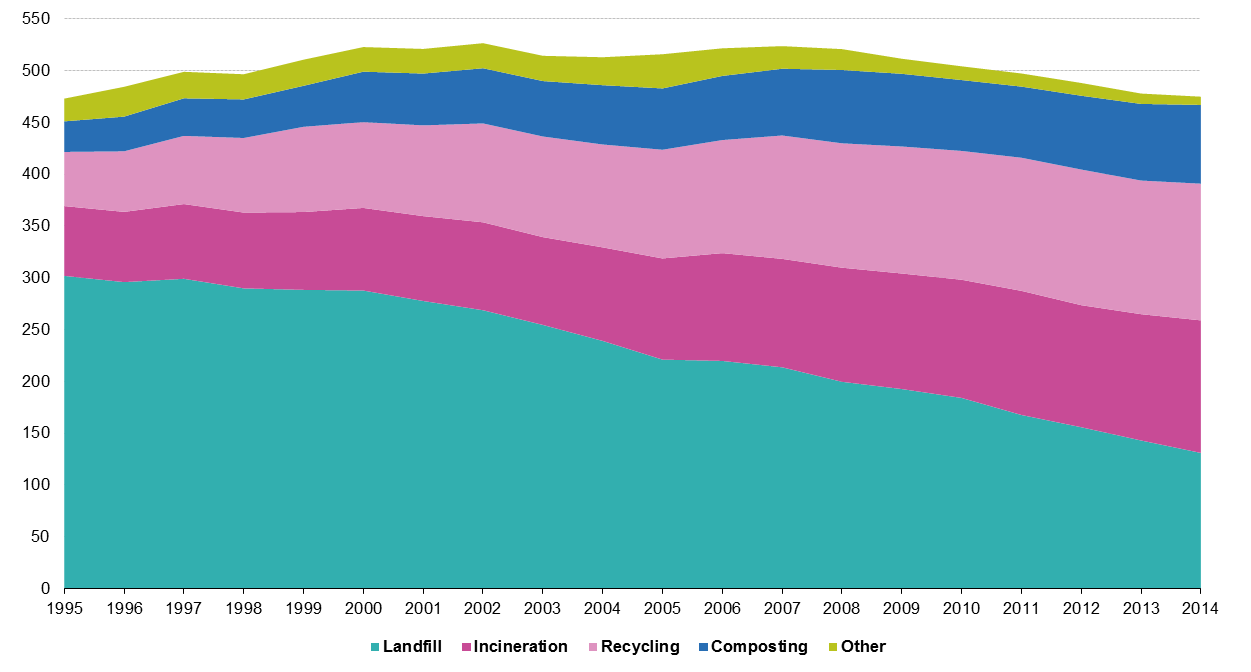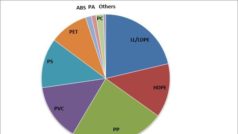For 2014, municipal waste generation totals vary considerably, ranging from 759 kg per capita in Denmark to 272 kg per capita in Poland and Romania. The variations reflect differences in consumption patterns and economic wealth, but also depend on how municipal waste is collected and managed. There are differences between countries regarding the degree to which waste from commerce, trade and administration is collected and managed together with waste from households.
 The periods 1995-2004 and 2004-2014 show the following trends in the 31 countries with complete time series, except for Greece (no data for 1995): In 17 of the 31 countries, the amount of municipal waste generated per capita increased between 1995 and 2014. The highest average annual growth rates were recorded for Greece based on 1996 and 2013 figures (2.3 %), Malta (2.2 %) and Denmark (2.0 %). In 12 countries, the annual growth rates alternated, with a positive annual growth rate in the first years, descending and becoming negative in the last ten years .
The periods 1995-2004 and 2004-2014 show the following trends in the 31 countries with complete time series, except for Greece (no data for 1995): In 17 of the 31 countries, the amount of municipal waste generated per capita increased between 1995 and 2014. The highest average annual growth rates were recorded for Greece based on 1996 and 2013 figures (2.3 %), Malta (2.2 %) and Denmark (2.0 %). In 12 countries, the annual growth rates alternated, with a positive annual growth rate in the first years, descending and becoming negative in the last ten years .
Of the fourteen countries with an overall decrease from 1995 to 2014, only two (Bulgaria and Slovenia) showed a decrease both before and after 2004. Bulgaria showed the largest reduction, with a steady annual average decrease of -2.4 %, followed by Slovenia, -1.7 % per annum.
From 2004 on, methodologies were finalised in most countries, so the waste generation time series of 2004 and later is more accurate and stable than that between 1995 and 2003.
Even though more waste is being generated in the EU-27, the total amount of municipal waste landfilled has diminished. In the reference period, the total municipal waste landfilled in the EU-27 fell by 78 million tonnes, or 54 %, from 144 million tonnes (302 kg per capita) in 1995 to 66 million tonnes (131 kg per capita) in 2014. This corresponds to an average annual decline of 4.0 %. During the last ten years (2004-2014) landfilling has fallen by as much as 5.6 % per year on average.
As a result, the landfilling rate compared with municipal waste generation, in the EU-27 dropped from 63.8 % in 1995 to 27,5 % in 2014. This reduction can partly be attributed to the implementation of European legislation, for instance Directive 62/1994 on packaging and packaging waste. By 2001, Member States had to recover a minimum of 50 % of all packaging put on the market. With the revised recovery target of 60 % to be achieved by 31 December 2008, there was a further rise in the amount of packaging waste collected separately.
Furthermore, Directive 31/1999 on landfill stipulated that Member States were obliged to reduce the amount of biodegradable municipal waste going to landfills to 75 % by 16 July 2006, to 50 % by 16 July 2009 and to 35 % by 16 July 2016.The reduction was calculated on the basis of the total amount of biodegradable municipal waste produced in 1995. The Directive has led to countries adopting different strategies to avoid sending the organic fraction of municipal waste to landfill, namely composting (including fermentation), incineration and pre-treatment, such as mechanical-biological treatment (including physical stabilisation).
As a result, the amount of waste recycled rose from 25.0 million tonnes (52 kg per capita) in 1995 to 66 million tonnes (132 kg per capita) in 2014 at an average annual rate of 5.2 %. The share of municipal waste recycled overall rose from 11 % to 28 %.
The recovery of organic material by composting has grown with an average annual rate of 5.3 % from 1995 to 2014. Recycling and composting together accounted for 44 % of organic material in 2014, relative to waste generation.
Waste incineration has also grown steadily in the reference period, though not as much as recycling and composting. Since 1995, the amount of municipal waste incinerated in the EU-27 has risen by 32 million tonnes or 100 % and accounted for 64 million tonnes in 2014. Municipal waste incinerated has thus risen from 67 kg per capita to 128 kg per capita.








